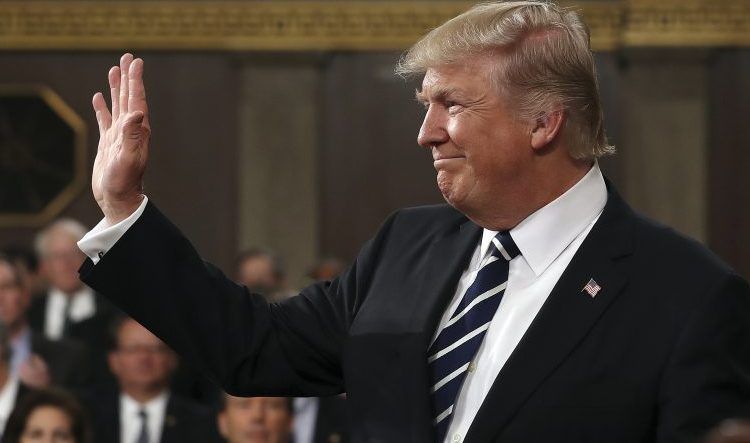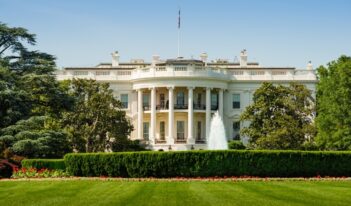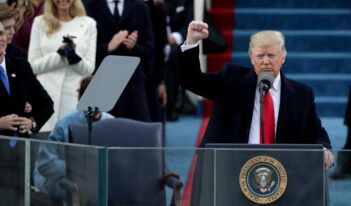
A recent executive order seeks to reinforce the Trump Administration’s regulatory reform agenda.
“I would say 70 percent of regulations can go.” Then-candidate Donald Trump said this at a town hall event in New Hampshire just over a month before he was elected president. Although commentators have suggested that a 70 percent cut in regulations might not be attainable—at least over the course of a single administration—President Trump has taken a number of steps to follow through on his campaign promise to scale back regulation.
Shortly after being sworn in, President Trump’s Chief of Staff Reince Priebus directed all executive departments and agencies to put a freeze on new or pending regulations and on hiring for federal jobs. Less than two weeks after these freezes were put in place, Trump issued the so-called two-for-one executive order, which called for executive departments and agencies to identify two existing regulations to repeal every time they promulgate a new regulation. The order also instructs agency heads to ensure that new regulations do not increase overall regulatory costs.
Trump also became only the second president to sign legislation under the Congressional Review Act (CRA), using the CRA to invalidate rules from the U.S. Securities and Exchange Commission and the U.S. Department of the Interior.
A more recent executive order looks to build on these actions and help further President Trump’s regulatory vision.
This newest order, entitled “Enforcing the Regulatory Reform Agenda,” requires each agency to begin taking steps to cut back on regulations. The order directs each agency to establish a Regulatory Reform Task Force comprising a specially designated Regulatory Reform Officer (RRO), the agency’s Regulatory Policy Officer, a representative from the agency’s policy office, and “at least three additional senior agency officials as determined by the agency head.”
As leader of the Task Force, the RRO is instructed to oversee the implementation of various regulatory reform initiatives, including Trump’s two-for-one executive order.
Additionally, the RRO is tasked with implementing two executive orders issued by President Trump’s Democratic predecessors. One is an executive order issued in 1993 by President Bill Clinton that requires regulations to undergo cost-benefit analysis and the other is a 2011 executive order issued by President Obama that calls for retrospective review of existing regulations.
More broadly, the Task Force is directed to make recommendations to the agency head about existing regulations that are ripe for “repeal, replacement, or modification.” The executive order provides a list of six categories of regulations that, at a minimum, the task force should identify for the agency head, including regulations that eliminate jobs or slow job growth, interfere with the Trump Administration’s regulatory reform agenda, or create more costs than benefits.
This latest Trump executive order on regulation has received praise from commentators on both sides of the aisle. In an op-ed for Bloomberg View, Cass Sunstein, a professor at Harvard Law School and a former Administrator of the Office of Information and Regulatory Affairs during President Obama’s first term, said the order is “likely to prove profoundly important.”
Sunstein refers to the plans the executive order requires as “eminently reasonable.” Citing the more than $28 billion saved due to the Obama Administration’s regulatory reform efforts, Sunstein acknowledges the value of such efforts and suggests that they present the opportunity to save far more than the Obama Administration’s total. Further, he argues that the White House alone would be incapable of analyzing all the regulations currently on the books. To that end, he commends the Trump Administration’s choice to hand over much of the review to the agencies themselves.
Striking a slightly different tone, Sunstein offers a word of caution, arguing that taking “a meat ax to the administrative state” is not the right approach for regulatory reform. Instead, he argues that a scalpel is the right tool, and suggests that the approach outlined in this executive order could be that scalpel.
Sam Batkins, the Director of Regulatory Policy for the conservative American Action Forum, has similarly praised Trump’s executive order. Batkins argues that the guidance provided by the new order addresses many of the questions created by Trump’s two-for-one order.
Both Batkins and Sunstein acknowledge that the review provided by the Task Forces is just one of many steps needed to begin enforcing President Trump’s regulatory reform agenda. Batkins, for his part, contends that the review will help the public understand the “possible success of regulatory reform in the Trump Administration.”
The new executive order gives the Task Forces 90 days from the order’s February 14, 2017 issuance to submit their first reports to agency heads.



